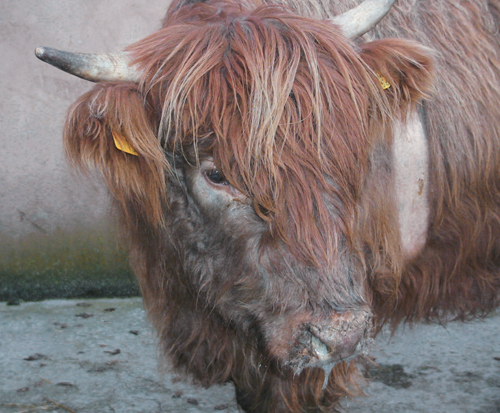Cattle Medicine Q&A 06
| This question was provided by Manson Publishing as part of the OVAL Project. See more Cattle questions |
In mid-autumn a farmer reports a single beef cow which is febrile (40.0°C (104.0°F)) and appears stiff and very reluctant to move due to swelling of the coronary band at the top of the hooves. There is a serous to mucopurulent nasal discharge and there are erosions on the muzzle with sloughing of the mucosa. There is lacrimation but no obvious eye lesions.
| Question | Answer | Article | |
| What conditions would you consider? | Single cases of bluetongue were first reported in the UK during August 2007. The most important differential diagnosis is foot and mouth disease, where the infection causes profuse salivation, erosions/ulcers in the mouth, lameness, and fever spread rapidly to affect all cattle on the premises within days. Other important differential diagnoses include IBR (group or herd) and malignant catarrhal fever (usually individual cattle). Bacterial endocarditis and chronic mastitis can cause fever and lameness with reluctance to walk but there are no head signs. |
Link to Article | |
| What action would you take? | Bluetongue is a notifiable disease in the UK and suspected cases must be reported immediately to the local Animal Health Office. |
Link to Article | |
| How is the provisional diagnosis confirmed? | Diagnosis is confirmed following virus isolation and/or seroconversion to bluetongue virus. |
Link to Article | |
| What control measures could be considered? | Control of bluetongue is very difficult because of the large number of potential hosts and virus serotypes. While control is aimed at keeping susceptible animals away from the vector this is not always practical. Control of the Culicoides vector can be attempted with pour-on insecticides, but this is expensive and does not achieve total freedom from the midge. Killed vaccines are used extensively worldwide and were successfully used in the UK in 2008. Most modified live vaccines produce a viraemia in the vaccinated animal which affords the opportunity for further spread. Problems may arise with viral reassortment if viraemic animals are vaccinated with a modified live vaccine. The timing of vaccination will depend upon local factors, in particular the occurrence of high-risk periods. |
Link to Article | |
